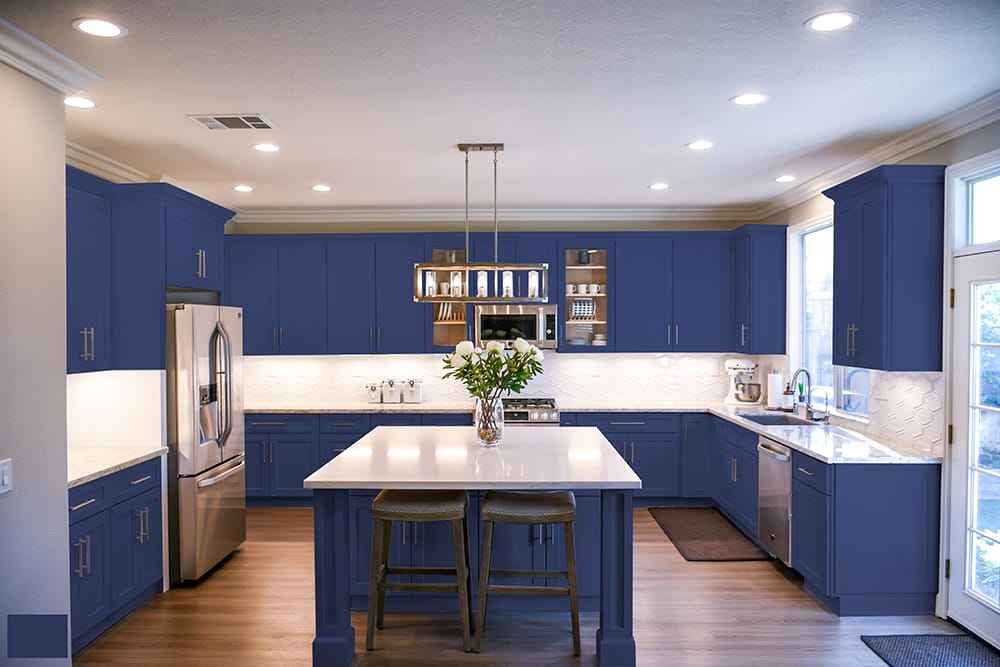From Color into Dye: Selecting Your Cupboard Restoration Technique

Refinishing your kitchen cabinets can breathe new life into your home, turning a space that may feel outdated into one that reflects your personal style. With the right approach, you can attain stunning results without the necessity for a full cabinet replacement, which can be both costly and time-consuming. Whether you want to revive the original beauty of your wood cabinets or alter the look with a modern finish, understanding the different methods available will help you reach an informed choice.
When it comes to kitchen cabinet refinishing, you generally have a couple of main routes to consider: coating or staining. Each method has its own benefits and challenges, making it essential to weigh your options carefully. By considering factors like the existing condition of your cabinets, the finish you desire, and your DIY skills, you can identify the best approach to create the kitchen of your dreams.
Comprehending Cabinetry Finishes

As considering kitchen cabinet refinishing, a key the first actions is to understand the various types of finishing options that are available. The finish you choose profoundly impacts the overall look, durability, and maintenance of the cabinets. Common finishes consist of paint, dye, and translucent coatings, with each offering unique visual appeal and levels of protection. By understanding the benefits and drawbacks of each, you can make an knowledgeable decision that aligns with your kitchen design and lifestyle.
Paint is a well-liked choice for a modern, sleek look. It provides a wide range of colors and textures, allowing for personalized options to fit any decor. Coated cabinets can hide imperfections and damage in the wood, giving an even appearance. However, they may require regular touch-ups throughout the years to keep their pristine look. Understanding the right forms of paint and application methods is essential for achieving a long-lasting finish.
Stains, on the contrary, enhance the natural beauty of the wood grain. This option works well for those looking to retain the classic look of their cabinets while refreshing their appearance. Wood finishes penetrate the wood, offering a more durable finish that can be less complicated to touch up than paint. However, with stains, it’s important to choose the right shade and type to match your existing decor. Balancing aesthetics with durability is key when deciding on a stain for the cabinet refinishing project.
Stain: Advantages and Disadvantages
When considering kitchen cabinet refinishing, one of the key decisions is whether to use paint or stain. Paint provides a solid, opaque finish that can completely change the appearance of your cabinets. diamondsprayfinish.com allows for a wide variety of colors and finishes, making it a versatile option for contemporary and traditional styles alike. However, paint can require more prep work and may chip or dent over time if not done correctly.
On the other hand, stain enhances the intrinsic beauty of the wood grain, allowing the texture and character of your cabinets to shine through. Wood-stained finishes can create a cozy and inviting atmosphere while also being less complicated to apply than color. However, finishes may lack the same level of color customization and might require more frequent reapplication, especially in busy areas.
Ultimately, the choice between paint and finish for kitchen cabinet refinishing is based on your preferred look and maintenance requirements. If you want a striking, uniform look, color is likely the way to go. Conversely, if you appreciate the organic wood appearance and seek a timeless feel, finish may be the better option.
Choosing the Best Technique for Your Kitchen
As you evaluating kitchen cabinet refinishing, the primary step is to assess the existing condition of your cabinets. In case they are in good condition but just are not vibrant, refinishing may be minimal, allowing you to select a straightforward paint or stain. If your cabinets have visible damage, it may be necessary to take them back to the bare wood for a fresh start. This choice will guide your choice between paint and stain, because each method has distinct requirements and outcomes.
Then, reflect on the preferred aesthetic and usability of your kitchen. Painted cabinets can provide a modern look and are available in an array of colors, enabling for a bold or soft transformation. Alternatively, stains can highlight the intrinsic appeal of the wood grain, providing a classic or rustic feel. In the case that you frequently cook or have a busy kitchen, consider how each finish will endure daily use, because some paints and stains may provide greater durability or simpler maintenance than others.
Finally, consider the degree of time and effort you are willing to dedicate in the refinishing process. Painting generally requires additional preparation, including prepping and base coating, while applying stain may be a quicker option if minimal preparation is needed. No matter what your decision, taking the time to prepare properly will enhance the finish and longevity of your cabinets, making them not just beautiful but useful as well.
